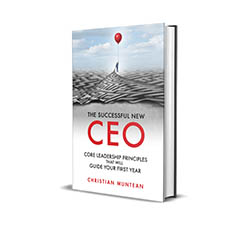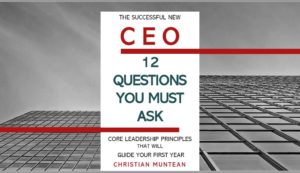Three Step Process for Resolving Organizational Aches and Pains

 Summary: Effective leaders know how to interpret problems accurately. The point of pain is rarely the source.
Summary: Effective leaders know how to interpret problems accurately. The point of pain is rarely the source.
A Fortune 500 company once contacted me to ask if I could intervene with a problematic behavior within their 30,000 employees. I suspected that if this was widespread behavior, the source must come from leadership.
I asked if this problem behavior was demonstrated amongst the executive team.
“Yes.”
Does it also exist on the board level?
“Yes.”
That was the source. I said I’d need to work with the board and executive team or nothing else would actually create transformation.
“They won’t be willing to do that.”
In that case, the problem won’t go away. At best, they could send an army of consultants to provide mandatory training across the company (people love that) – just to say they had tried.
But they hadn’t. And they didn’t want to. They wanted to treat the symptoms, not the cause.
The Point of Pain is Rarely the Source of Pain
Leaders often misinterpret “pain” in an organization. These pains show up as conflict, complaints, errors, morale issues, confusion, cash flow problems, etc.
While some “pain” may be due to a specific one-off problem – many or most organizational “aches and pains” tend to be chronic. Chronic or repeated issues are nearly always systemic or cultural.
In my last article, I wrote about how doing the right things can be what is causing pain in an organization. But sometimes they do come from doing the wrong things. Or not doing anything.
It is crucial that leaders learn to not only diagnose and interpret pain accurately – but to understand how to treat it.
Look Upstream and Downstream
Organizations, like our bodies, are organic.
The sources of organizational issues are often difficult to recognize. Similarly, the ripple effects of pain can travel throughout the body.
In my previous article, I used my recent experience I had with plantar fasciitis. (Which is better, thanks.)
The solution for my plantar fasciitis was to do a lot of work restoring flexibility and movement in the tissue system from my toes to my hip. In this case, I discovered that most of the focus needed to be on my calf and the muscles of my shin. By getting my lower leg to release tension – my foot was able to quickly heal.
The problem in my foot was a symptom. But the source was upstream.
Organizations are often the same way. When there are chronic aches and pains, it’s possible that the cause is upstream or downstream of the problem.
Three Steps for Resolving Organizational Aches and Pains
Step 1 “Desensitize”: Address the immediate problem
Just because the source of the pain was upstream doesn’t mean I could ignore the pain in my foot. In fact, I couldn’t ignore it if I wanted to. Walking hurt too bad.
I had to desensitize or stabilize the immediate issue. I used a number of physical therapy techniques to accomplish this.
An organizational example of this is when a customer writes an online, publicly visible complaint. They had a problem, they went to multiple employees for help, and ended up feeling like they were given the run-around. Finally, they became so frustrated, they vented online.
Addressing the customer’s needs doesn’t fix the actual problem. But their needs do need to be addressed. And depending on the nature of your business, a visibly unresolved online complaint can create a lot of pain.
A wise response is to write an online response demonstrating that the complaint was heard and then a personal follow-up from someone who can resolve the problem. This “desensitizes” or stabilizes the situation.
But the source of the pain still needs to be addressed. Or it’ll reappear.
Step 2 “Restore Function”: Explore the systems and make adjustments
What felt like getting the “run-around” to the customer, was due to internal confusion around roles and responsibilities. None of the employees the customer approached had the authority to address the issue. Nor did they know who to refer to.
This is an upstream issue.
To resolve it, leadership needs to make roles and responsibilities clear to everyone. Along with this, they should clarify the company’s dispute resolution policy and process.
To discover this, the system needs to be explored until the cause of the problem is identified. Then it needs to be adjusted until it is again functional in a healthy way.
Step 3 “Prevention”: Creating awareness and maintaining health
One of the benefits of taking the time to explore the cause of issues is that it creates organizational “self-awareness.” Think of someone who had and then resolved a chronic injury or pain. Chances are high that they’ve become pretty literate on the anatomy of that part of their body, how it works, and things that help or hinder function.
Past pain demands focus. Focus helps us learn. Being more knowledgeable about our organizations helps us prevent future issues from developing – or helps us intervene more quickly when something starts to emerge.
For the organization above, it might make sense to conduct a regular review of customer comments or feedback to try to catch problems early. It might also make sense to periodically review how well their customer dispute resolution process appears to be working. Last, it probably makes sense to identify themes of common areas of dispute and look for clues on what else can be improved.
Whatever the solution is, it includes cultivating awareness.
Leaders create culture. Culture is reinforced through systems.
This isn’t easy. It requires a level of self-knowledge that many organizations haven’t cultivated.
It also requires a culture of self-reflection where people who are upstream or downstream of the problem feel safe to say, “I think the problem might be here.”
Organizational self-knowledge becomes much easier when an organization is well-aligned* – from its values and vision all the way through its organizational structures, goals, and policies. It takes work to do this initially. But, in time, it means that causes for problems are much easier to identify and resolve. Time invested in this now saves time later.
Leaders can find sustainable solutions when they take ownership of being architects of culture and its supporting systems.
Take good care,
Christian
*For more resources on a well-aligned organization, check out my downloadable resource, 30 Days to a Beautifully Aligned Team.
Are you interested in learning more about becoming a successful CEO? If so, get a free copy of my book The Successful New CEO. Not a new CEO? I’ve been told by “old hands” that they felt any CEO should read this. So, click here to get your copy today.
by “old hands” that they felt any CEO should read this. So, click here to get your copy today.
Let’s connect.
I’m passionate about helping leaders to create workplaces they love going to and increasing the value of the services they offer. My results-oriented approach is tailored to each client’s specific situation and needs. As a leadership coach, I have developed a wealth of resources to help you and your team grow and become stronger.
Weekly Newsletter – sign up to receive my weekly articles addressing critical leadership challenges and issues.
The Leadership Coach Podcast – In my podcast, we explore effective, high-impact, and enjoyable leadership. Subscribe.
Resources – Visit my website’s Resources page for e-books, webinars, training, and leadership coaching opportunities for you and your team.
There are 𝟭𝟮 𝗰𝗿𝗶𝘁𝗶𝗰𝗮𝗹 𝗾𝘂𝗲𝘀𝘁𝗶𝗼𝗻𝘀 to ask before accepting a new CEO position. Do you know what they are? Instantly download my free e-book here.
Find the value of your company with my free assessment tool: The Value Builder System
The Value Builder System™ is a 13-minute online questionnaire that evaluates your business on the eight factors that contribute more to its attractiveness and value. These factors are scored on a scale of 1-100. Businesses that score over 80 are likely to command 70%-100% higher value than others.
Opportunities
Free Resource: How To Accomplish More Without Doing More is a workbook I created to walk leaders through a process of helping you own your calendar, liberate your time, and still get more done. Download it for free!
Executive and Leadership Coaching: Do you feel overwhelmed? Are you not getting the results you expect from the effort you are putting in? Do you find yourself facing similar challenges time and time again? Would you like to change specific ways of relating or reacting? If you would like to experience predictable, measurable growth Contact me.
Profitable Exit Strategy Workshop: Are you a business owner or partner? Over 55? Starting to think about exiting your business or active management in the next 3-5 years?
- Curious about what your business might be worth?
- Would you like to discover the specific steps you need to take to increase its value and become highly attractive to a buyer?
- Are you planning on handing it over to family or employees and you want to ensure long-term success?
If so, contact me now
Article Categories
Popular articles

Download my free 10-page eBook:
How To Accomplish More Without Doing More:
Eight Proven Strategies To Change Your Life
Discover how to save eight hours during your workweek-even if you're too busy to even think about it. The resource every maxed out executive needs.

